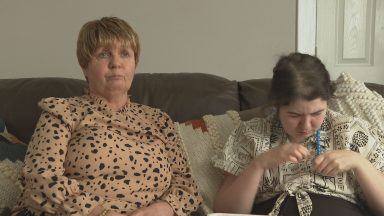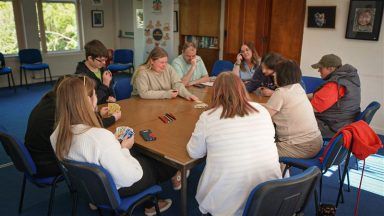The murder of an elderly suffragette which hit international headlines more than 100 years ago will be explored in a podcast.
No motive was ever established for the killing of Jean Milne, 69, who was bludgeoned to death in her Broughty Ferry mansion, near Dundee, in 1912 with expensive jewellery left untouched.
One suspect was identified but had a legitimate alibi.
Ms Milne was tied up in the 23-room mansion which she had shared with her brother before his death, and was still wearing her jewellery when her body was found.
She didn’t have friends in Broughty Ferry but was said to have enjoyed ‘the company of younger men’ on regular trips to London, and she attended meetings of the suffragettes locally.
Her body was found around three weeks after she was murdered.
A team from the University of Dundee’s Leverhulme Research Centre for Forensic Science (LRCFS) have produced a new podcast series, ‘Inside Forensic Science’, to review original witness statements and explore the evidence gathered by detectives.
Over the course of six episodes, they will explain how forensic science, in its infancy in 1912, has changed and how it might be used in a modern investigation.
The aim is not to reopen the case but to demonstrate the vital importance of forensic science to the justice system.
Professor Niamh Nic Daeid, director of LRCFS, said: “We are delighted to work with all of the experts who have contributed their knowledge and expertise to reviewing the tragic case of Jean Milne.
“In exploring how science is used in investigations, we can really see some of the advances that have been made but also how some areas of practice have stayed the same even after 100 years.
“We are indebted to the Adventurous Audio team who have produced for us this fantastic podcast series.”
Ms Milne was born in Dundee and lived with her brother, a wealthy tobacco manufacturer, in his 23-room Elmgrove mansion.
Following his death in 1903, Jean lived in Elmgrove alone and received an annual income worth more than £100,000 in today’s money as part of her inheritance.
At that time, most of Dundee’s citizens lived in crowded and unsanitary tenements while its eastern suburb of Broughty Ferry was said to be home to the greatest concentration of millionaires in the world.
The city was fertile ground for various political movements, and Ms Milne was known to have attended suffragette meetings at the time when local supporters were making the life of Winston Churchill, then MP for Dundee, uncomfortable.
Her body was discovered at home on November 3, 1912, after her postman became concerned by the mail piling up behind her door and called the police.
Ms Milne had apparently been bludgeoned to death by a poker, while a bloodstained carving fork found nearby had been used to stab her.
The walls were splattered with blood and Ms Milne’s broken false teeth were scattered across the stairs.
While no money was found in a purse that lay beside the body, nothing else in the home seemed to have been disturbed and the expensive jewellery for which Ms Milne was famous locally was still at the scene.
There was no sign of forced entry, leading to a hypothesis that she had known and possibly invited her attacker into the house. Celebrated Glasgow detective John Trench was drafted in to help local police with their investigation, but no one was ever charged with the offence.
A notorious Canadian conman was arrested in London on suspicion of the crime but released when his alibi – that he had been in Antwerp at the time of the murder – checked out.
The murder shocked the country and, as the investigation spread to England and the continent, attracted international media attention.
Inside Forensic Science will explore how forensic science has changed over the past century and detail how developments in the field would assist the investigation if this crime took place today.
The series can be found on Spotify, Podbean, and Google podcasts.
Follow STV News on WhatsApp
Scan the QR code on your mobile device for all the latest news from around the country


 iStock
iStock




















